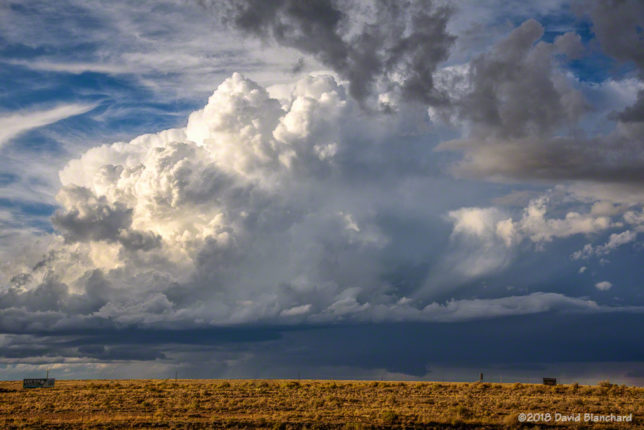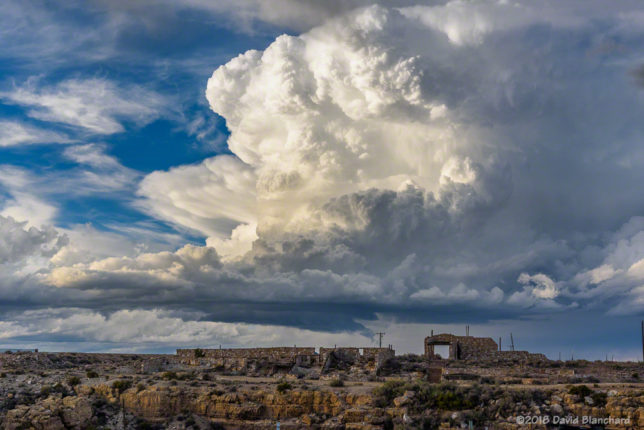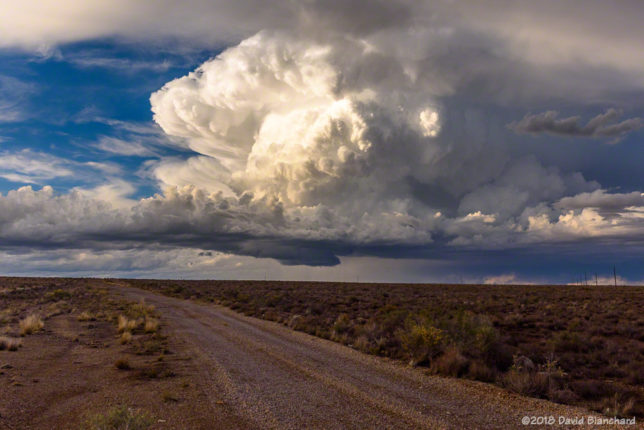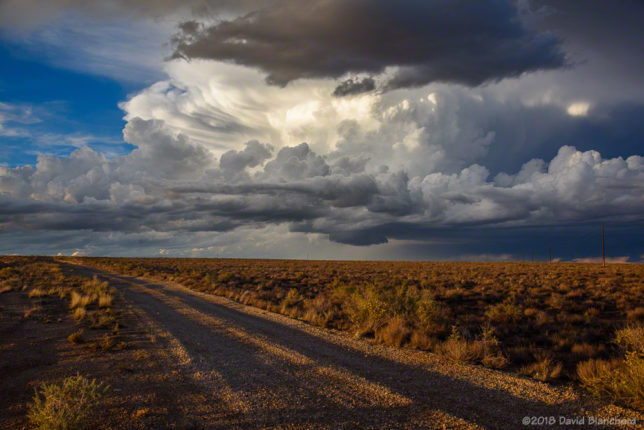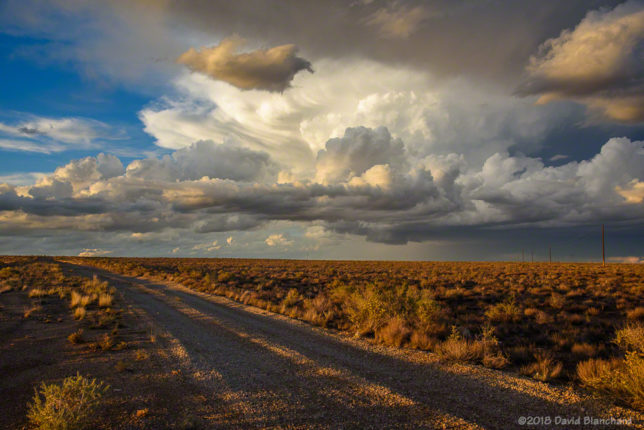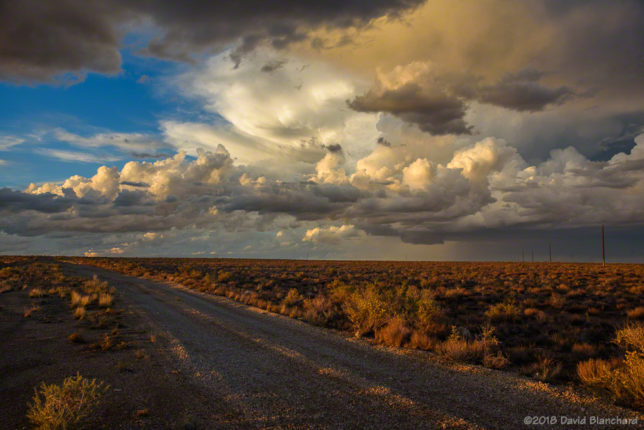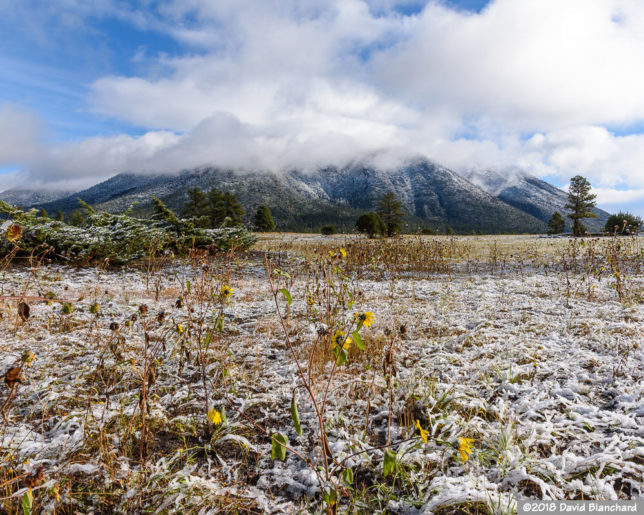In the wake of a departing low pressure system I expected that there might be areas of dense fog in the morning. I awoke well before sunrise to look at satellite images to see if fog was developing. And, yes, there were some hints that fog was present. Good!
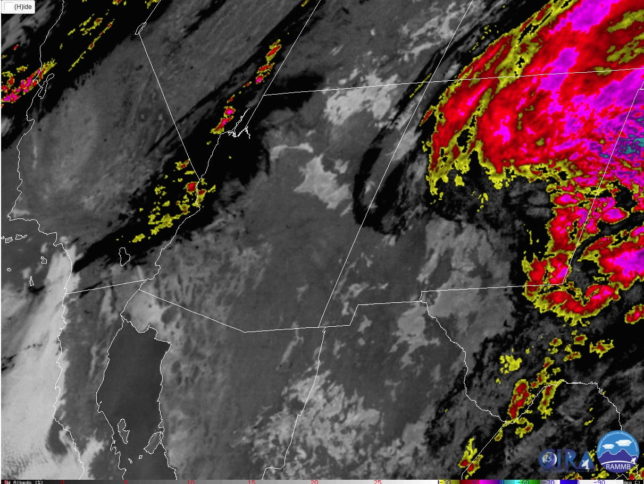
I left the house around 6 a.m. and headed east on Lake Mary Road. A few miles outside of town I ran into fog. Visibility dropped quickly to around 1/4 mile. Drive carefully!
My destination was the Mormon Lake Overlook. I had some success last winter at this site with a similar fog situation. As I approached the overlook the fog lifted becoming a low cloud deck above me. Hmmmm….not quite what I wanted. Ahead, I could see the edge of the cloud/fog. As I made the final approach to the overlook the road gained a bit of elevation and, suddenly, I was above the cloud/fog deck. Wonderful.
The sun had not yet risen but it was light enough to see that there was a shallow layer of fog covering the Mormon Lake basin. Moments later the sun began to rise through the dense fog.
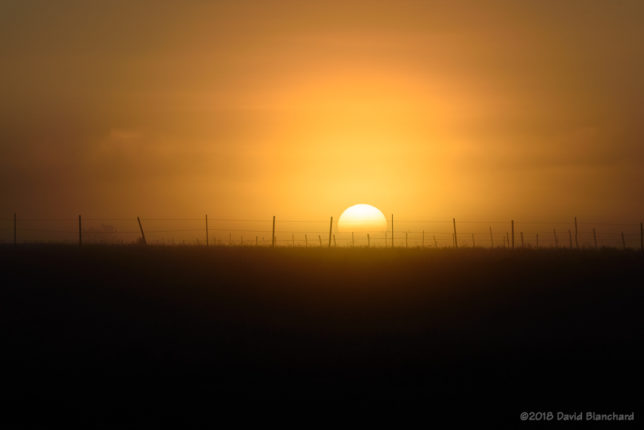
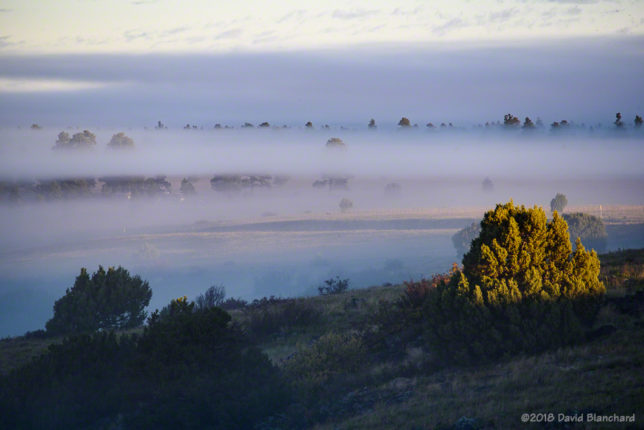
With the sunrise a Glory and Brocken spectre became visible. Moments later, two short segments of a fog bow appeared. Also visible is a shadow of the overlook.
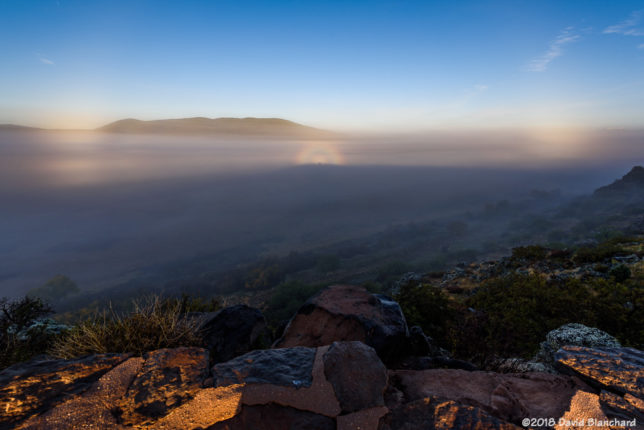
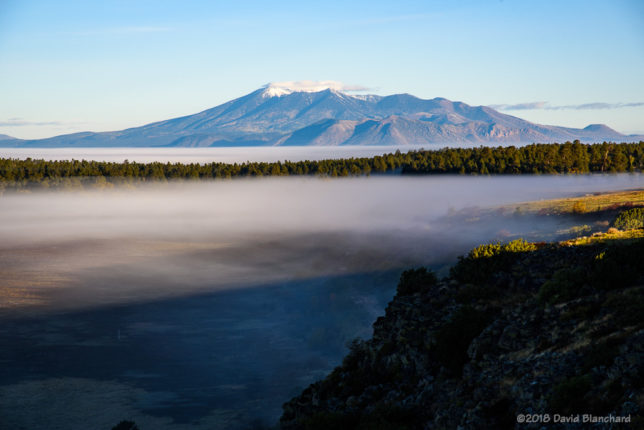
As the fog began to dissipate over Mormon Lake, I headed towards Anderson Mesa Station (home to several telescopes) because it is high enough to be above the fog. But first, along the way, the road dropped down into the fog and I saw this fog bow.

Finally, atop Anderson Mesa I once again was above the fog and able to photograph a Glory—this time projected onto trees with autumn colors.
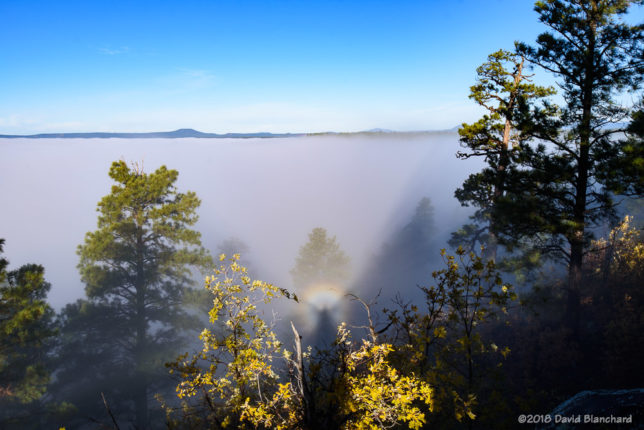
Finally, here is a time-lapse of the fog over Mormon Lake that includes the Glory and the right-hand side of the fog bow.
Edit: Replaced GOES-16 visibile image with IR image.
